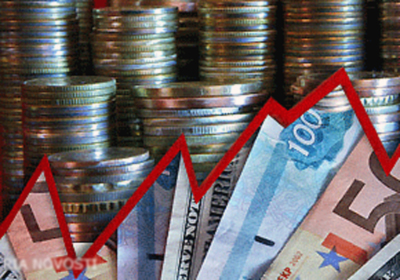Republic: The Diagnosis after Three Years of Crisis, or Why the Russian Economy Survived

(Institute of Modern Russia – imrussia.org – Oct. 20, 2017 [from “Russian media roundup, October 13-20, 2017”])
At the turn of 2014-2015, it was uncertain as to whether the Russian economy would emerge standing. Yakov Mirkin, the head of International Capital Markets Department Institute of World Economy and International Relations, lists seven reasons to explain what saved the Russian economy and seven major risks to its future.
- Growth in the global economy.
- The rise in prices for raw materials and the continued demand for Russian raw materials.
- Dynamics of the dollar/euro exchange rate-the dollar has become weaker to the euro, which always increases world prices for raw materials. In turn, this has restrained the weakening of the ruble and inflation within Russia.
- Trade relations with the EU have proved to be strong-Russian oil and gas exports continue to go to the West, cars continue to be imported to Russia, and even the U.S. share in Russia’s foreign trade will increase this year. What Russia does not buy in the West, it will get in the East.
- The devaluation of the ruble in 2014, while painful, was useful for the economy-it decreased the gigantic gap between the real and nominal effective ruble exchange rates, helped commodity companies remain profitable, and created an economic barrier to the export of capital from Russia.
- The “crutch economy”: The state created artificially normal market conditions, including loan availability, low loan interest, tax cuts, and direct investments from the budget. However, these are only props created at the expense of the budget.
- The “shadow economy,” which has grown since 2014 in reaction to economic crisis.
Mirkin argues that any new shock to the economy could ruin it, especially since there is nothing more volatile than world prices for raw materials, exchange rates, and the whims of non-resident investors. The main risks to the future of the Russian economy are:
- Remaining a predominantly commodity economy.
- High military expenditures.
- Nationalization, superconcentration, and the tightening of administrative pressure.
- Archaic view of life that does not value technological development.
- The financial risk associated with banks and with the system of carry trades.
- External issues: the destabilization of raw materials prices, the strengthening of the dollar, external geopolitical shocks.
- Long term technological risks, due to the sanctions.
[Article also appeared at imrussia.org/en/the-rundown/media-must-reads/2864-sobchak-for-president,-why-the-russian-economy-survived,-new-report-on-chechen-tortures bearing the following notice:
© 2010–2017 The Institute of Modern Russia, Inc.
Citation of material from this website is allowed without obtaining prior permission, provided that it includes a link to the original page.
Link should be placed directly in the body of the text, immediately following or preceding the citation.]
